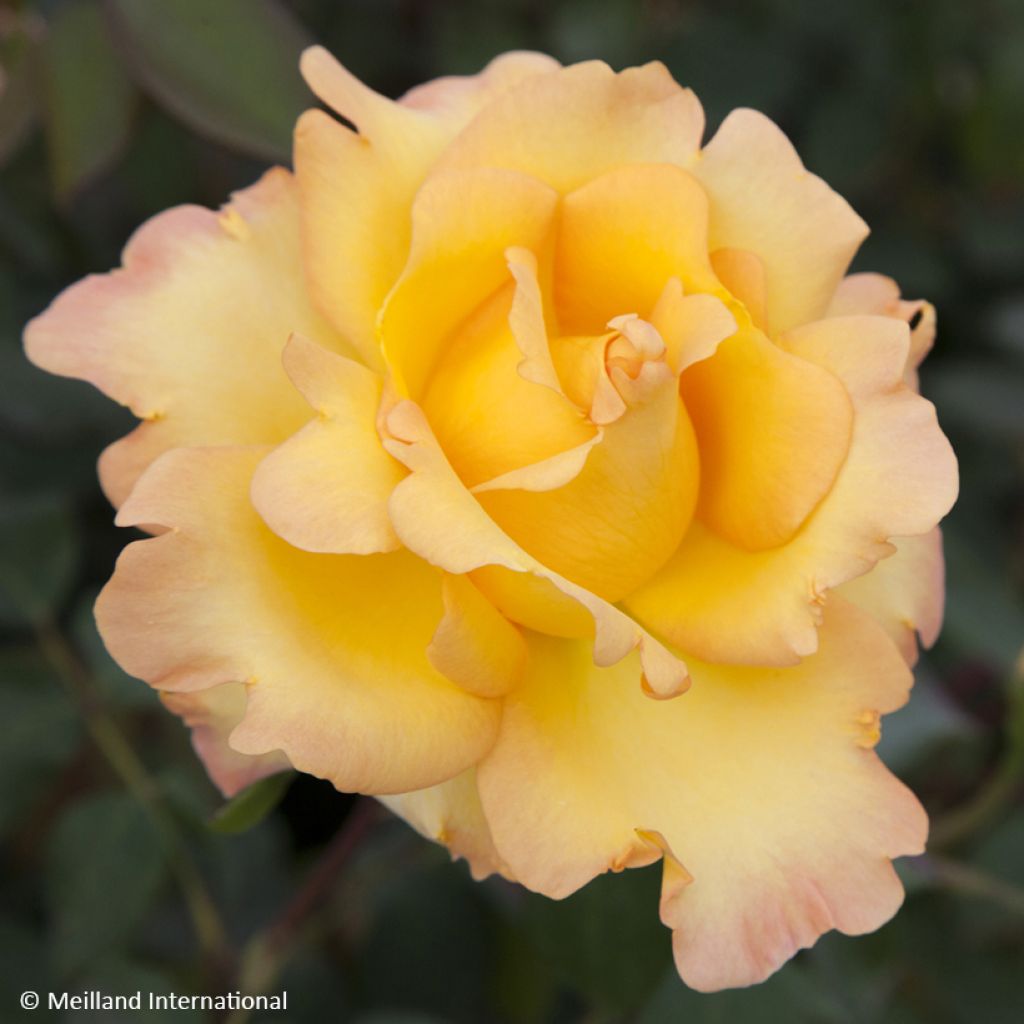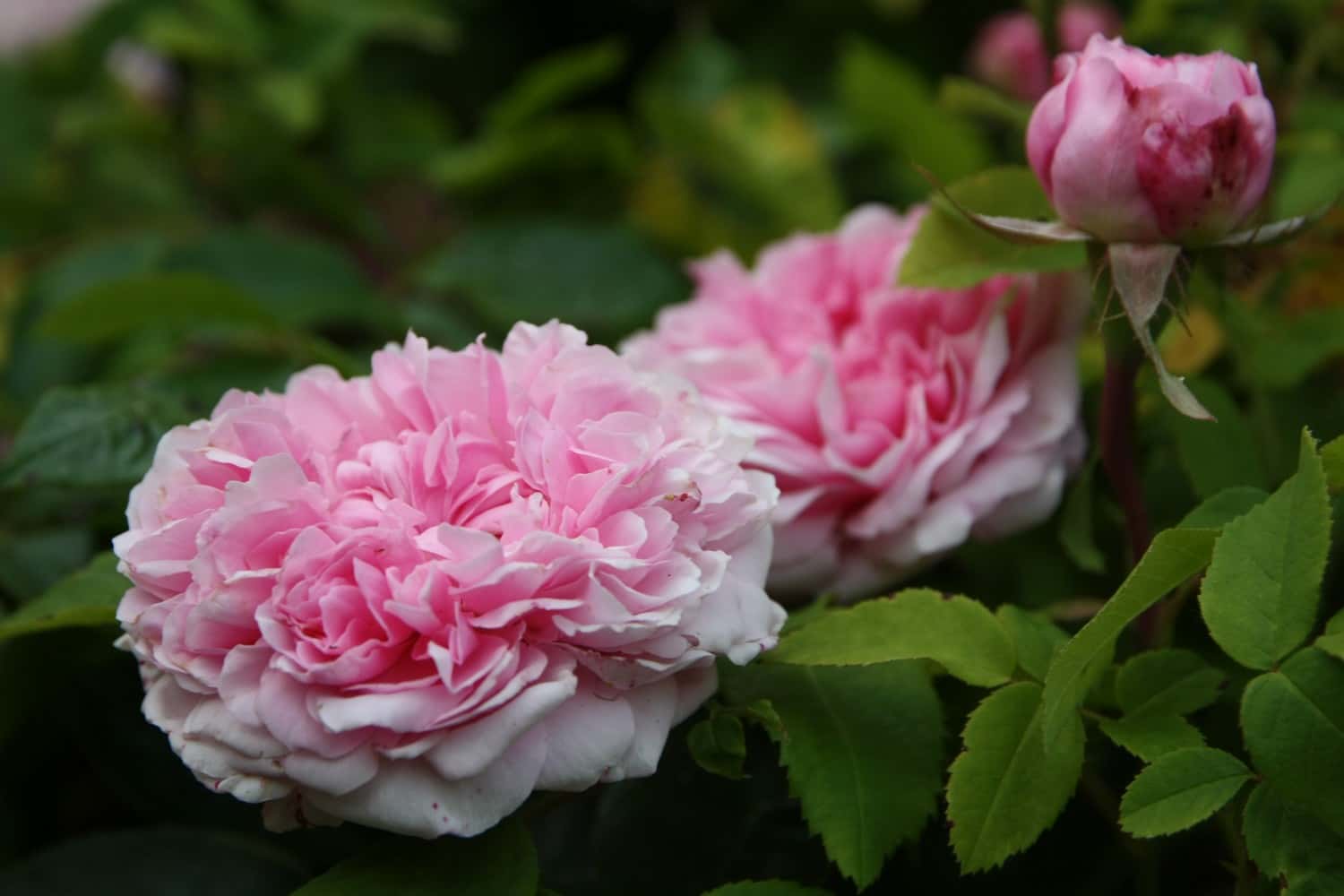

Rosa Eureka - Hybrid Tea Rose
Rosa Eureka - Hybrid Tea Rose
Rosa 'Meizambaizt' EUREKA®
Hybrid Tea Rose
Special offer!
Receive a €20 voucher for any order over €90 (excluding delivery costs, credit notes, and plastic-free options)!
1- Add your favorite plants to your cart.
2- Once you have reached €90, confirm your order (you can even choose the delivery date!).
3- As soon as your order is shipped, you will receive an email containing your voucher code, valid for 3 months (90 days).
Your voucher is unique and can only be used once, for any order with a minimum value of €20, excluding delivery costs.
Can be combined with other current offers, non-divisible and non-refundable.
We guarantee the quality of our plants for a full growing cycle, and will replace at our expense any plant that fails to recover under normal climatic and planting conditions.

Description
The Eureka® 'Meizambaizt' Rose combines excellent floribundity and great hardiness, a rare combination of qualities that make this shrub a top variety. Offering abundant and continuous flowering, it particularly shines at the end of the season when its numerous ochre-yellow flowers continue to warm the garden. Its dark, glossy, and almost evergreen foliage gives it an interesting presence throughout the year. With excellent disease resistance, this outstanding rose requires little maintenance.
The Eureka® Meizambaizt Rose is a creation by Meilland International developed before 2012. This rose has been awarded for its exceptional qualities, winning several prestigious accolades. In 2011, it received a certificate in Lyon, a gold medal in Monza, Italy, and a certificate at the Bagatelle Competition in Paris. The following year, in 2012, it won first prize at the Altera Rosa show in Avignon. Introduced in the UUA under the name 'Gold Struck™', this rose belongs to the horticultural group of Grandiflora roses. Grandifloras are hybrids resulting from the cross-breeding between hybrid tea roses and floribunda roses, combining the size and shape of the former with the floribundity of the latter.
The Eureka® 'Meizambaizt' Rose has a bushy, dense, and upright habit, reaching a height of 70 to 90 cm. Its foliage is dark green, glossy, and often persists through winter, at least partially. The leaves are compound, with ovate leaflets and slightly dentate edges. The flowers of about 10 cm in diameter display an ochre-yellow hue with coppery undertones. They consist of 25 to 26 petals and are characterised by their traditional shape, often cup-shaped or slightly turbinate. They bloom in small clusters of 2 to 5 units, with a very subtle fragrance. The flowering is continuous, beginning in May-June, sporadically renewing in summer, and ending in October or November with the first frosts. The autumn flush is particularly abundant. The stems are thorny, a common characteristic among roses.
The history of this rose reflects the expertise of Meilland International, who for decades have strived to create varieties combining aesthetics, hardiness, and floribundity. The success of the Eureka® Meizambaizt Rose on the international stage confirms the exceptional quality of this variety.
The Eureka® Meizambaizt Rose will easily find its place in any garden, which it will enliven with its bright flowering for weeks. It can be used to bring structure to a flower bed, border a pathway, or adorn a patio in a pot. Its colours will pair well with white, blue, mauve, or orange blooms. For example, you can pair it with a 'Happy Chappy' ground-cover rose with multicoloured flowers, a small Rigo Innocencia® white rose, and California poppies.
Rosa Eureka - Hybrid Tea Rose in pictures


Plant habit
Flowering
Foliage
Botanical data
Rosa
'Meizambaizt' EUREKA®
Rosaceae
Hybrid Tea Rose
Rosa 'Meizambaizt' GOLD STRUCK
Cultivar or hybrid
Planting and care
To plant your Eureka rose, prepare the soil by digging a 30cm cube, breaking up the earth well and adding a base fertiliser such as dried blood or dehydrated horn at the bottom of the planting hole. Position your plant after removing it from its pot, covering the top of the root ball with 3cm of soil, backfill and water thoroughly to eliminate any air pockets. During dry weather, water regularly for a few weeks to encourage root development. Also consider feeding your rose with a special rose fertiliser to stimulate flowering. Choose a sunny spot, or partial shade in very hot regions.
Planting period
Intended location
Care
Planting & care advice
This item has not been reviewed yet - be the first to leave a review about it.
Haven't found what you were looking for?
Hardiness is the lowest winter temperature a plant can endure without suffering serious damage or even dying. However, hardiness is affected by location (a sheltered area, such as a patio), protection (winter cover) and soil type (hardiness is improved by well-drained soil).

Photo Sharing Terms & Conditions
In order to encourage gardeners to interact and share their experiences, Promesse de fleurs offers various media enabling content to be uploaded onto its Site - in particular via the ‘Photo sharing’ module.
The User agrees to refrain from:
- Posting any content that is illegal, prejudicial, insulting, racist, inciteful to hatred, revisionist, contrary to public decency, that infringes on privacy or on the privacy rights of third parties, in particular the publicity rights of persons and goods, intellectual property rights, or the right to privacy.
- Submitting content on behalf of a third party;
- Impersonate the identity of a third party and/or publish any personal information about a third party;
In general, the User undertakes to refrain from any unethical behaviour.
All Content (in particular text, comments, files, images, photos, videos, creative works, etc.), which may be subject to property or intellectual property rights, image or other private rights, shall remain the property of the User, subject to the limited rights granted by the terms of the licence granted by Promesse de fleurs as stated below. Users are at liberty to publish or not to publish such Content on the Site, notably via the ‘Photo Sharing’ facility, and accept that this Content shall be made public and freely accessible, notably on the Internet.
Users further acknowledge, undertake to have ,and guarantee that they hold all necessary rights and permissions to publish such material on the Site, in particular with regard to the legislation in force pertaining to any privacy, property, intellectual property, image, or contractual rights, or rights of any other nature. By publishing such Content on the Site, Users acknowledge accepting full liability as publishers of the Content within the meaning of the law, and grant Promesse de fleurs, free of charge, an inclusive, worldwide licence for the said Content for the entire duration of its publication, including all reproduction, representation, up/downloading, displaying, performing, transmission, and storage rights.
Users also grant permission for their name to be linked to the Content and accept that this link may not always be made available.
By engaging in posting material, Users consent to their Content becoming automatically accessible on the Internet, in particular on other sites and/or blogs and/or web pages of the Promesse de fleurs site, including in particular social pages and the Promesse de fleurs catalogue.
Users may secure the removal of entrusted content free of charge by issuing a simple request via our contact form.
The flowering period indicated on our website applies to countries and regions located in USDA zone 8 (France, the United Kingdom, Ireland, the Netherlands, etc.)
It will vary according to where you live:
- In zones 9 to 10 (Italy, Spain, Greece, etc.), flowering will occur about 2 to 4 weeks earlier.
- In zones 6 to 7 (Germany, Poland, Slovenia, and lower mountainous regions), flowering will be delayed by 2 to 3 weeks.
- In zone 5 (Central Europe, Scandinavia), blooming will be delayed by 3 to 5 weeks.
In temperate climates, pruning of spring-flowering shrubs (forsythia, spireas, etc.) should be done just after flowering.
Pruning of summer-flowering shrubs (Indian Lilac, Perovskia, etc.) can be done in winter or spring.
In cold regions as well as with frost-sensitive plants, avoid pruning too early when severe frosts may still occur.
The planting period indicated on our website applies to countries and regions located in USDA zone 8 (France, United Kingdom, Ireland, Netherlands).
It will vary according to where you live:
- In Mediterranean zones (Marseille, Madrid, Milan, etc.), autumn and winter are the best planting periods.
- In continental zones (Strasbourg, Munich, Vienna, etc.), delay planting by 2 to 3 weeks in spring and bring it forward by 2 to 4 weeks in autumn.
- In mountainous regions (the Alps, Pyrenees, Carpathians, etc.), it is best to plant in late spring (May-June) or late summer (August-September).
The harvesting period indicated on our website applies to countries and regions in USDA zone 8 (France, England, Ireland, the Netherlands).
In colder areas (Scandinavia, Poland, Austria...) fruit and vegetable harvests are likely to be delayed by 3-4 weeks.
In warmer areas (Italy, Spain, Greece, etc.), harvesting will probably take place earlier, depending on weather conditions.
The sowing periods indicated on our website apply to countries and regions within USDA Zone 8 (France, UK, Ireland, Netherlands).
In colder areas (Scandinavia, Poland, Austria...), delay any outdoor sowing by 3-4 weeks, or sow under glass.
In warmer climes (Italy, Spain, Greece, etc.), bring outdoor sowing forward by a few weeks.








































